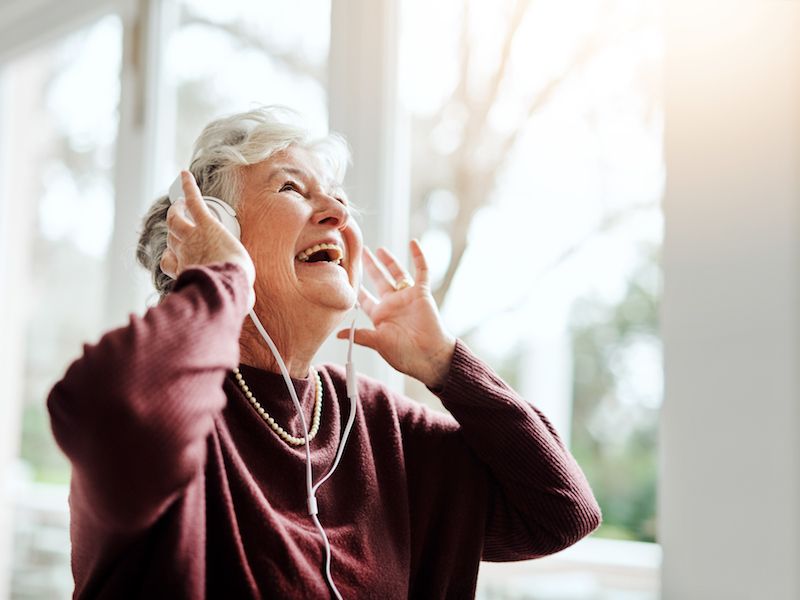
People who work in loud surroundings like construction sites or at heavy metal concerts are not the only people affected by noise related loss of hearing. Recreation associated noise exposure can be just as damaging as work related noise exposure. The most prevalent type? Music, gaming, streaming video or anything that you would listen to through headphones or earbuds.
You may not think your smartphone or tablet can get that loud. The average pain threshold for human hearing is around 150 db which is in the range of these devices. Your ears will literally start to hurt at this volume. So what’s the plan to protect against this kind of noise-related loss of hearing?
The volume level here is important. A simple shorthand that’s widely recommended is the 60/60 rule: Listen with the volume at or below 60% for no more than 60 minutes at a stretch (because how long you listen for matters, too).
Create a Setting on Your Hearing Aids For Music
Make certain, if you’re using hearing aids, you don’t try to drown out other sounds by cranking your streaming music up too loud. In addition, ask us about how to best listen to music. Hearing aids aren’t designed to make music clearer like they do with voices so if you’re really into music, you might have discovered this. We might be able to change the configuration to decrease noise and feedback while increasing some frequency ranges to enhance the quality of sound when listening to music.
What Are The Best Headphones For You?
When picking out headphones there are many options, specifically if you use hearing aids. It might be a matter of personal preference, but there are some things you should consider there as well.
Over-the-Ear Headphones
While the foam-covered earpieces that was included with your old Walkman are basically a thing of the past, over-the-ear headphones have had a resurgence. Often surprisingly expensive, they provide lots of color options and celebrity endorsements, and of course, better sound quality. And unlike those little foam pads, these cover the whole ear, blocking outside sounds.
Conventional wisdom is that these are less dangerous than in-ear headphones because the source of the sound is further from your eardrum. But because the speakers are larger they are often capable of much louder sound level. Additionally, noise-canceling may help you ignore the crying baby on your flight, but in other scenarios, it can silence sounds you should hear (like a honking car). Having said that, because they cancel out outside noise, you can often reduce the volume of what you’re listening to so it’s not loud enough to cause damage to your ears.
Earbuds
The normal earbuds are widely known for poor quality of sound, though lots of people still use them because hey, they came with the phone. Moreover, with newer versions that don’t have a headphone jack, sticking with Apple’s earbuds can simply be easier.
The drawback, besides the inferior sound quality, is that basic earbuds can’t block outside sounds, so you’re more likely to pump up the sound level. Again, though it’s frequently said that earbuds are a problem because you put them into your ear so their speakers are extremely close to your eardrum, volume is the biggest issue.
Earbuds That Block External Noise
A lot of people opt for earbuds with a rounded, rubbery tip both because they’re more comfortable than standard earbuds and more effective at stopping outside noises. The rubber conforms to the shape of your ear, producing a seal that stops other sounds from getting in. But these earbuds can also block out sounds you need to hear and loud volume is still the primary issue. And if you wear hearing aids, clearly these won’t work for you.
A number of pairs may have to be tested before you find headphones that are correct for you. Depending on what you’re most often using them for say talking on the phone, as opposed to listening to music, you’ll have different acoustic expectations. Enjoying your tunes at a safe volume and finding headphones that assist you in doing that is essential.
How to be Sure Your Hearing is Safeguarded
How can you be sure it’s safe? If you have a smartphone, you can get an app for that, you can get the National Institute for Occupational Safety and Health’s free Sound Level Meter app. There are different apps out there, but studies has found that the accuracy of these other apps is hit-and-miss (additionally, for whatever reason, Android-based apps have proven less accurate). That motivated NIOSH to develop their own app. The app lets you measure external noises, but you can also measure the sound coming from your device’s speakers, this means, the true volume of what’s going to your ears. You have to do a little work, but taking these types of protective steps can help protect your hearing.